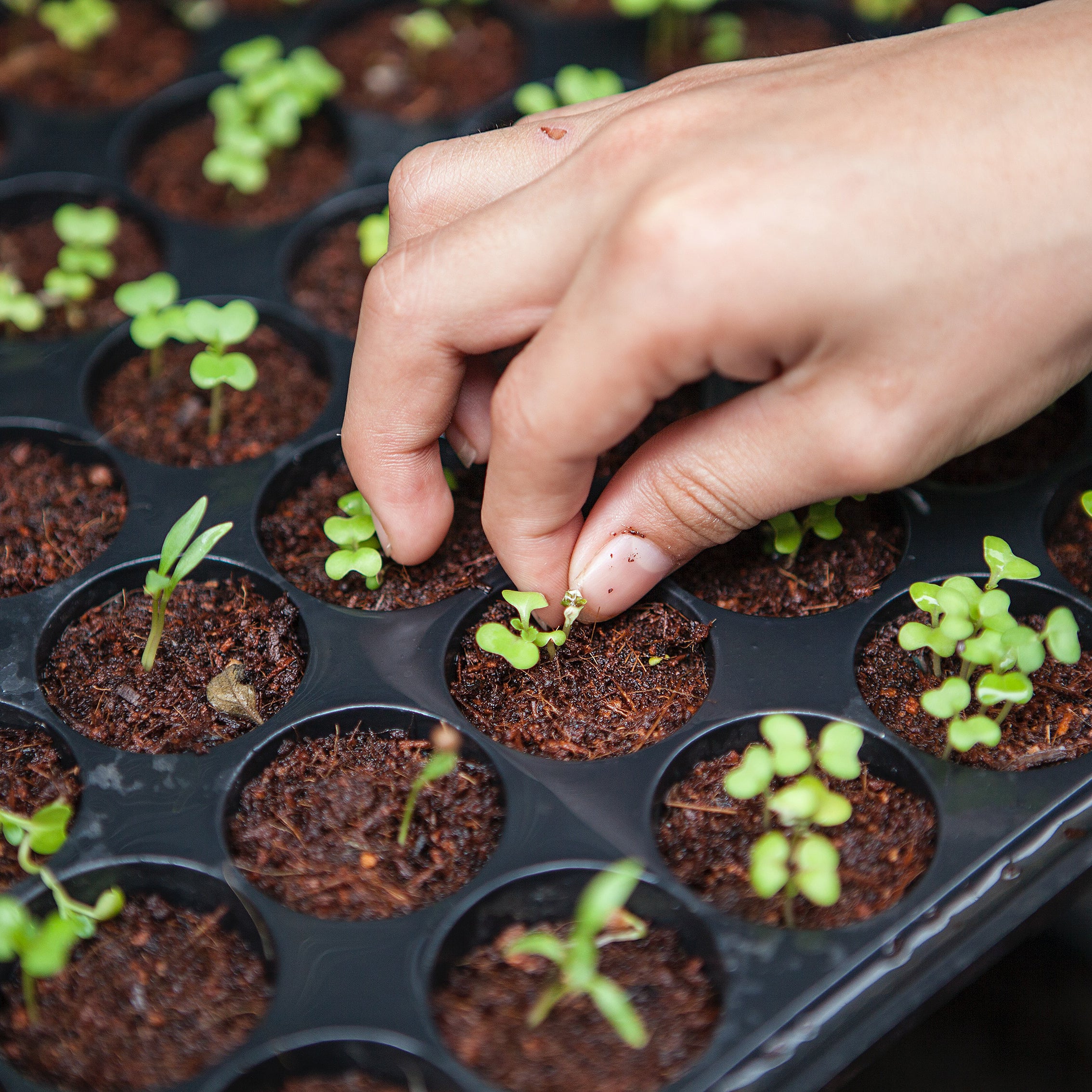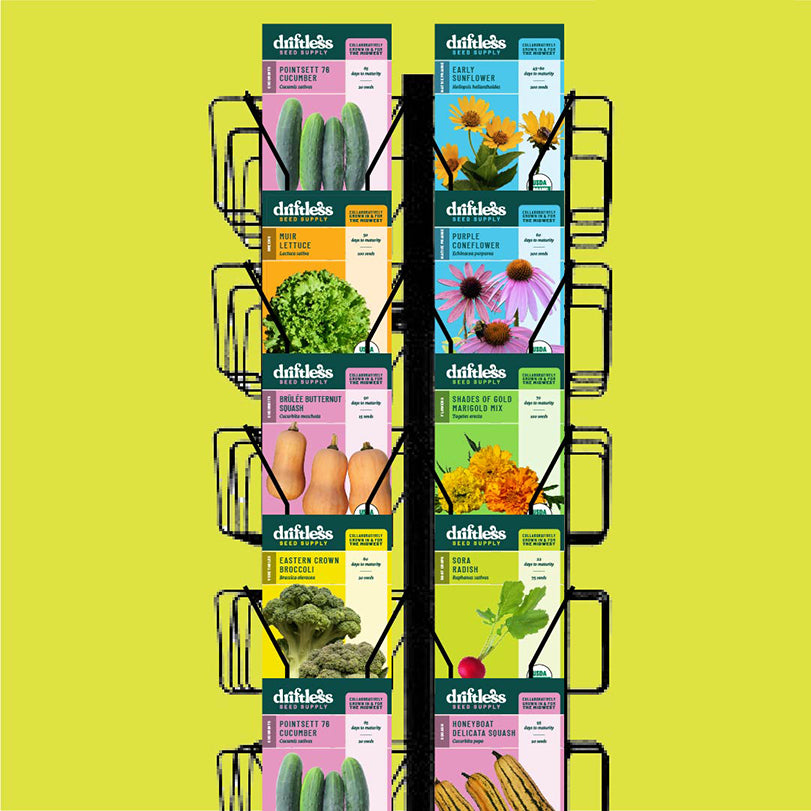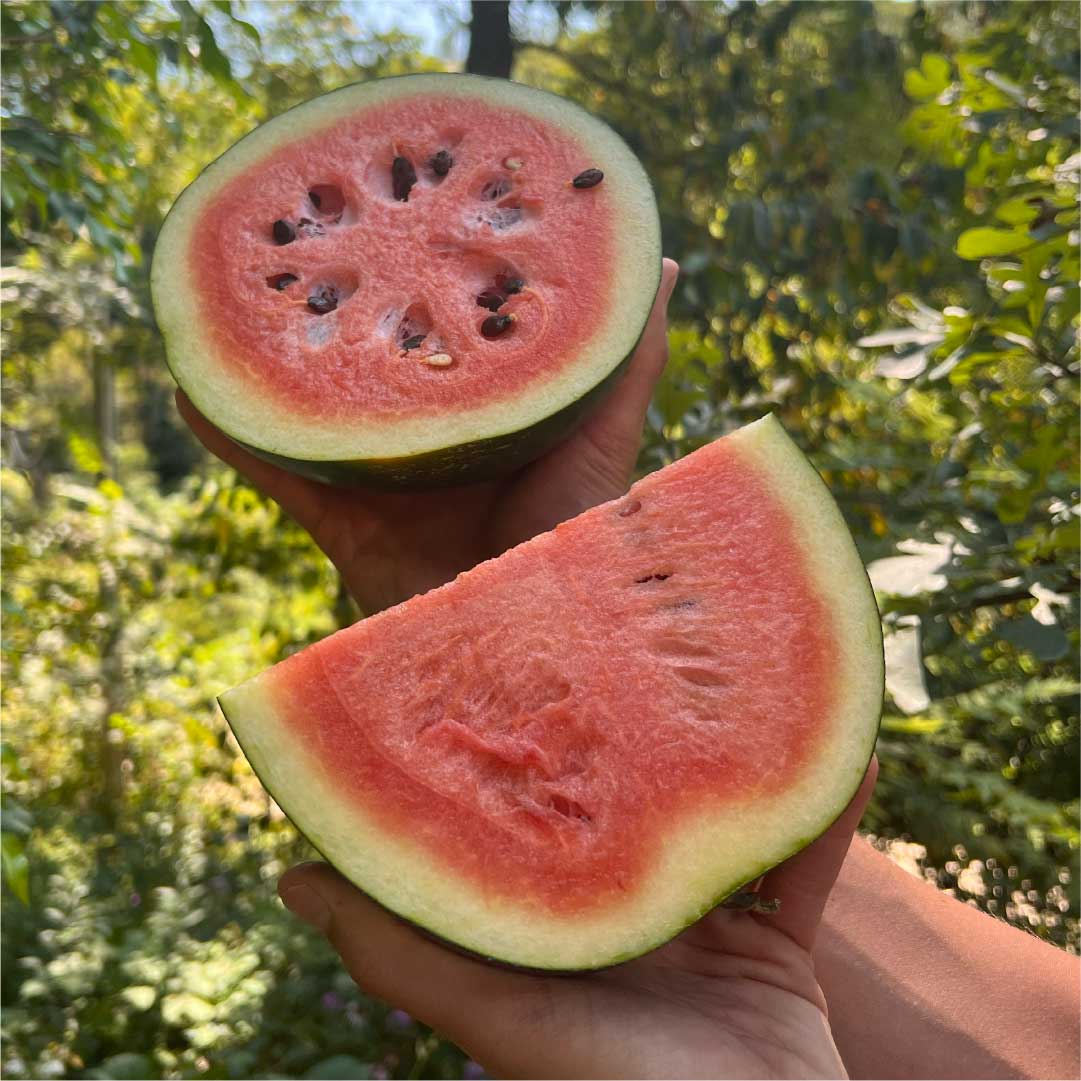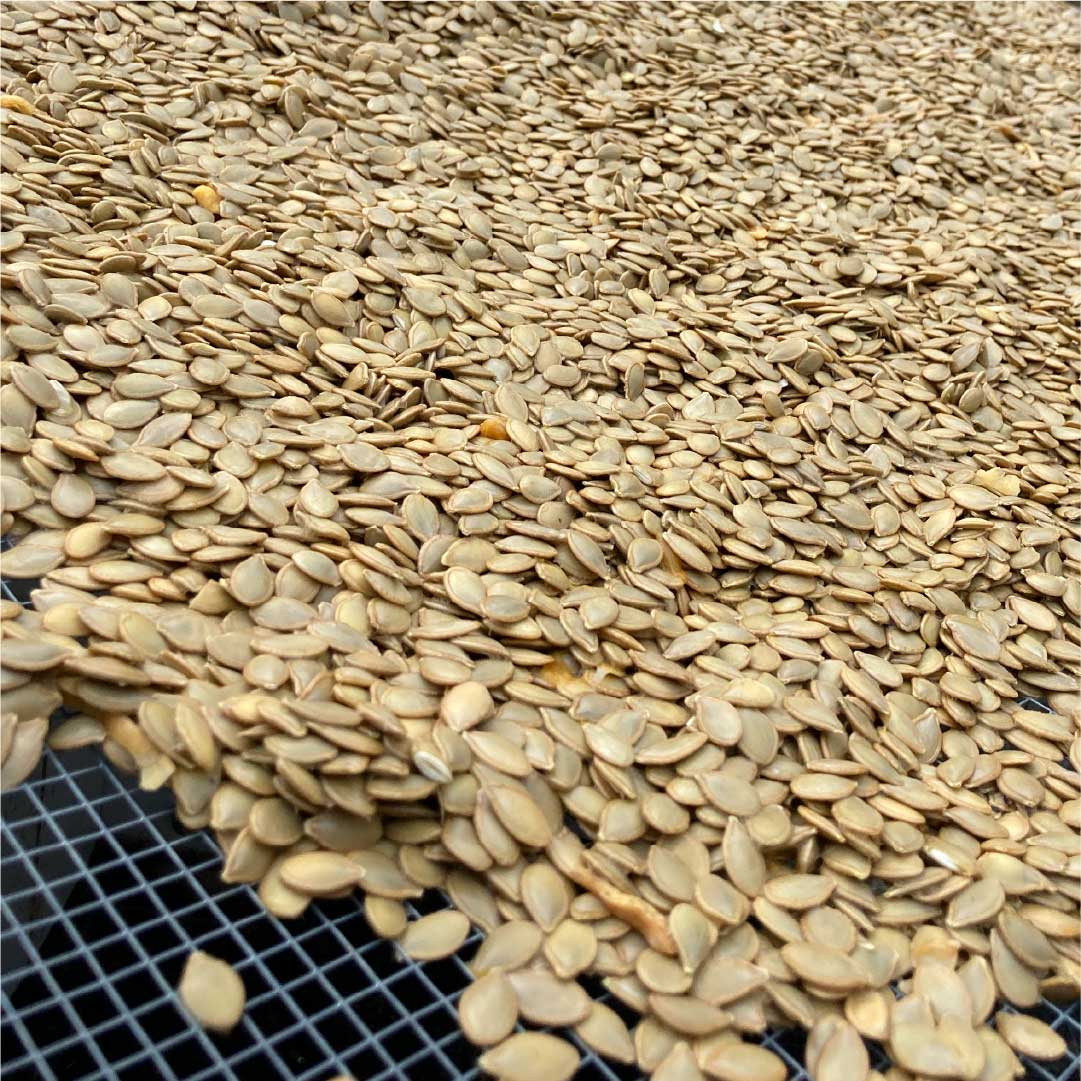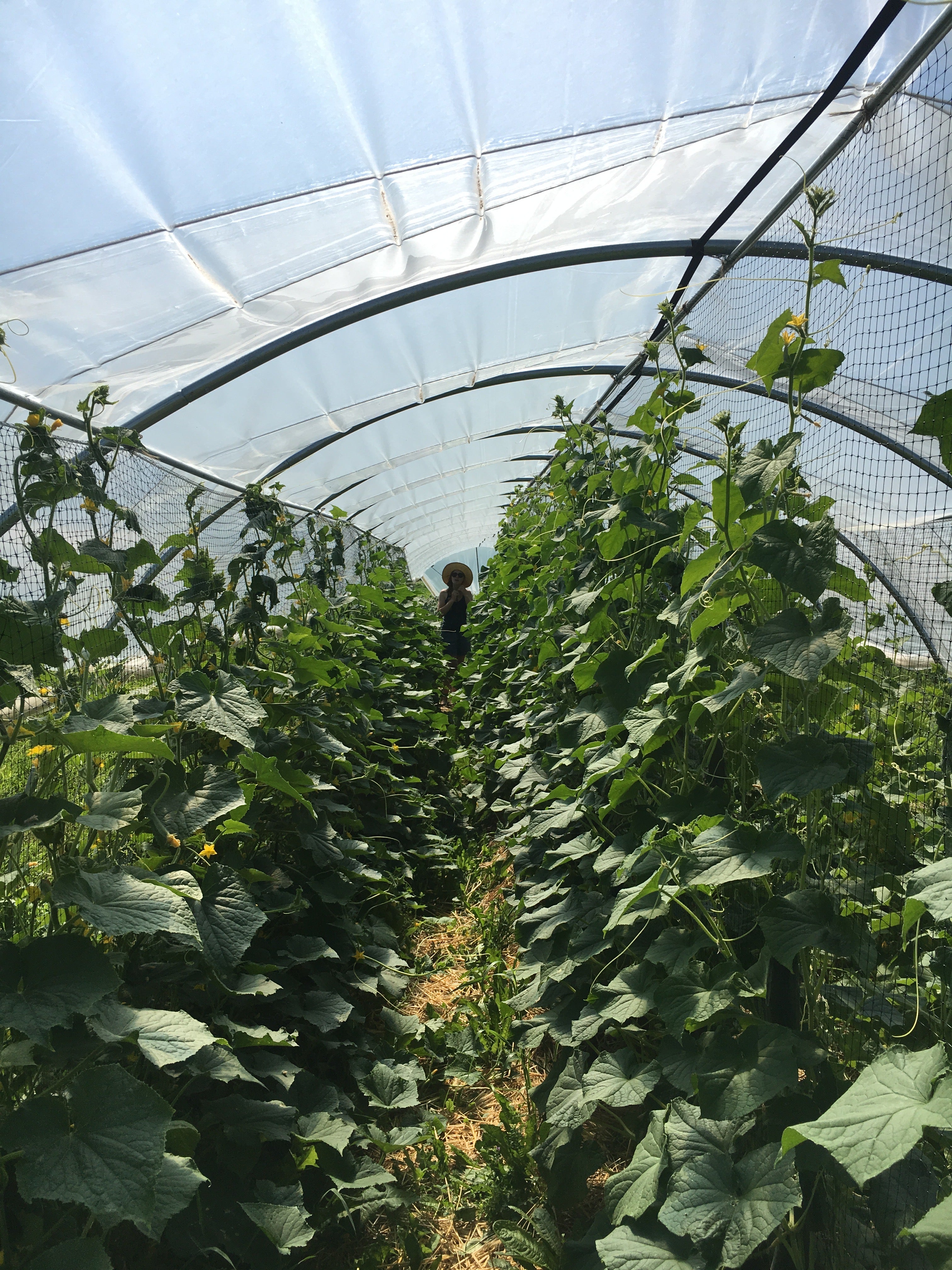
Driftless Seed Supply Grower Resources
Cucumber Growing Resources
Historical and Cultural Significance
The cucumber (Cucumis sativus), belonging to the Cucurbitaceae family, has a rich history that dates back over 3,000 years. Originally cultivated in India, its cultivation spread to Western Asia and Greece by 1500 B.C., becoming a staple in the diets of ancient Egyptians and Romans. The Romans, in particular, were known for their advanced techniques in cucumber growing. By the 14th century, cucumbers had made their way into Europe, and by the 16th century, they were introduced to the Americas by explorers and colonists. Across cultures, cucumbers have been prized not only as a food source but also for their medicinal properties, believed to have cooling and hydrating effects. Today, they are a global staple, featured in a variety of culinary traditions, symbolizing freshness and often associated with summer dishes, salads, and pickles.
Choosing the Right Variety
- Slicing Cucumbers: Ideal for fresh consumption. Look for varieties with smooth skin and a uniform shape. Can be shorter, like American slicers, or longer, like Asian slicers.
- Pickling Cucumbers: Smaller and have a bumpy texture. They are perfect for pickling due to their size and flavor.
- Burpless Cucumbers: These are sweeter and have a thinner skin, ideal for those who prefer a milder taste. Includes many Asian Cucumbers, Beit Alpha types like Green Finger, and some others.
Site Selection and Soil Preparation
- Location: Choose a site with full sun exposure.
- Soil Type: Cucumbers thrive in well-drained, fertile soils. Loamy or sandy loam soils are ideal.
- Soil pH: Aim for a soil pH between 6.0 and 7.0.
Planting: Timing, Spacing, and Depth
- Timing: Plant cucumbers when the soil temperature reaches at least 60°F.
- Spacing: Plant seeds about ½ to 1 inch deep and 12-18 inches apart in rows that are 4-6 feet apart.
- Support: Consider using trellises for vining varieties to save space and promote healthier plants.
Irrigation
- Water Requirements: Cucumbers require consistent moisture, especially during fruiting. Water deeply at least once a week, more frequently during hot, dry periods. For some varieties of cucumber, plants can become permanently bitter if exposed to intense drought conditions.
Organic Fertilization for Cucumbers
When growing cucumbers organically, it's crucial to focus on building soil fertility and providing balanced nutrition using certified organic inputs. Here's a detailed guide:
Pre-planting Soil Preparation
- Organic Matter Incorporation: Add well-rotted compost or aged manure to enhance soil fertility and structure.
- Green Manure: Utilize cover crops like clover or vetch before planting and till them into the soil to add organic matter and nitrogen.
Baseline Fertilization
When it comes to fertilizing cucumbers, the specific NPK (Nitrogen, Phosphorus, Potassium) recommendations per acre can vary based on soil type, previous crop history, and specific cucumber variety.
- Nitrogen (N): Cucumbers require a moderate amount of nitrogen for proper growth. Generally, a total of 60-100 pounds of nitrogen per acre is recommended throughout the growing season. This is often split into multiple applications: a pre-planting application of about 30 to 50 pounds per acre, followed by one or two side-dress applications of 30 to 50 pounds per acre each during key growth stages like vine development and flowering.
- Phosphorus (P₂O₅): An application of 50 to 100 pounds of phosphorus (as P₂O₅) per acre is common. The exact amount depends on the soil test results. Phosphorus is crucial for root development and is typically applied pre-planting.
- Potassium (K₂O): Potassium requirements are similar to phosphorus, with recommendations often in the range of 100 to 150 pounds of potassium (as K₂O) per acre. Potassium is important for overall plant health and disease resistance. Like phosphorus, it's usually applied before planting.
These are general guidelines, and the exact amounts may vary. It's crucial to conduct a soil test before applying fertilizers to determine the specific needs of your soil and adjust the fertilizer rates accordingly. Over-fertilization can lead to environmental issues and imbalances in plant growth, so precision in fertilizer application is important.
Side-Dressing
- Nitrogen Sources: Employ blood meal or feather meal for additional nitrogen during vine development.
- Application Rate: Side-dress with 20-30 lbs/acre during vine running and initial flowering stages.
Foliar Feeding
- Micronutrient Sprays: Use organic seaweed extract or fish emulsion sprays.
- Application Guidelines: Follow manufacturer’s instructions for dilution and frequency.
Soil Health Management
- Compost Tea Applications: Enhance soil microbial activity and nutrient availability with regular compost tea applications.
- Organic Mulching: Use straw or grass clippings to conserve moisture and add nutrients as they decompose.
Monitoring and Adjustments
- Soil Testing: Conduct regular soil tests to monitor and adjust nutrient management.
- Plant Observation: Monitor plant health for signs of nutrient deficiencies.
Pest and Disease Management
Pests
- Cucumber Beetles: Use row covers to protect plants. Pesticides may be necessary for severe infestations.
- Aphids: Encourage beneficial insects or use insecticidal soap as needed.
Diseases
- Powdery Mildew: Ensure good air circulation and consider fungicides if necessary.
- Bacterial Wilt: Control cucumber beetles which spread this disease.
Trellising
- Vertical Trellising: Ideal for small gardens. Use sturdy posts with netting or string for cucumbers to climb. Saves space and promotes air circulation.
- A-Frame Trellis: Suitable for medium-sized gardens. Construct an A-frame using wood or metal and attach netting. It allows easy access to cucumbers on both sides.
- T-Post and Wire Trellis: For larger or commercial scales, like hoop houses and field production. Set up T-posts in rows and stretch strong wire or twine between them at various heights.
- Vertical or Horizontal Netting: In commercial settings, use netting for large-scale cucumber production. It maximizes space and makes harvesting easier. Hortanova type netting is good - make sure the weave/cells of the netting are not too narrow or they may restrict cucumber growth and make them unmarketable.
- Pruning: Some varieties benefit from pruning. In those cases, regularly prune and train cucumber vines to grow up the trellis, which increases yield and improves fruit quality.
Harvesting
- Timing: Harvest when cucumbers are of appropriate size but before they turn yellow.
- Method: Use a sharp knife or scissors to cut the cucumbers off the vine.
Post-Harvest Handling and Storage
- Handling: Handle cucumbers gently to avoid bruising.
- Storage: Store at 50-55°F with high humidity for short-term storage. Cucumbers are sensitive to chilling injury if stored below 50°F for extended periods.
Additional Tips
- Pollination: Cucumbers require pollination. Plant flowers nearby to attract pollinators.
- Succession Planting: For a continuous harvest, plant a new batch of cucumbers every 2-3 weeks.
- Crop Rotation: Avoid planting cucumbers in the same location year after year to reduce disease risks.

